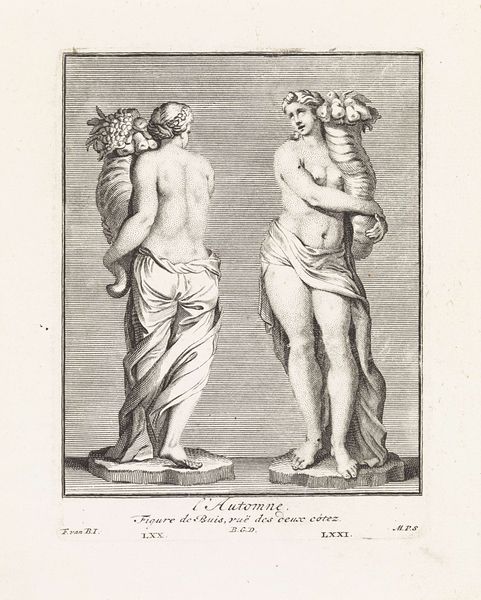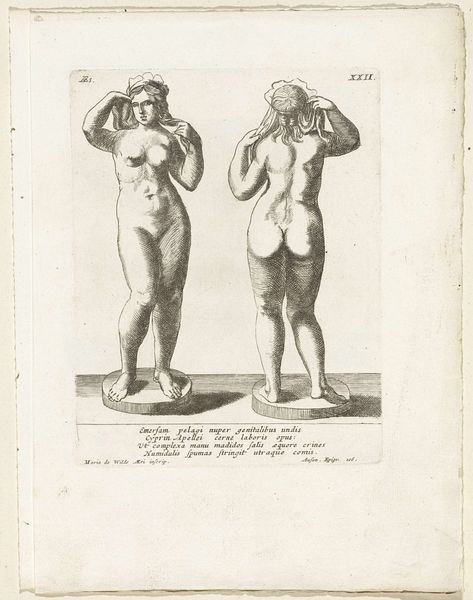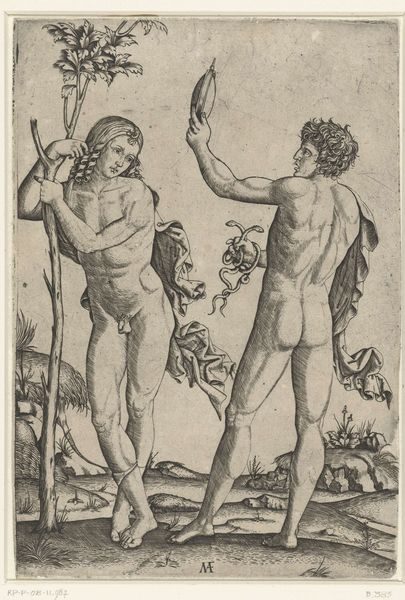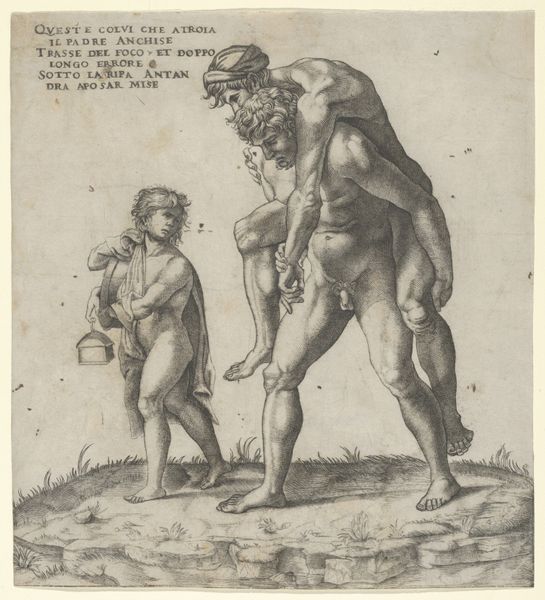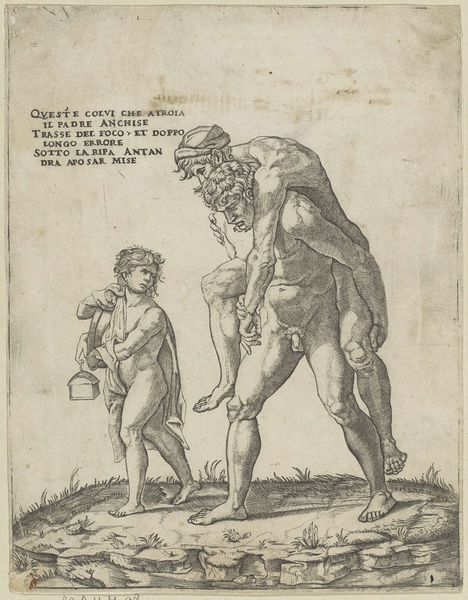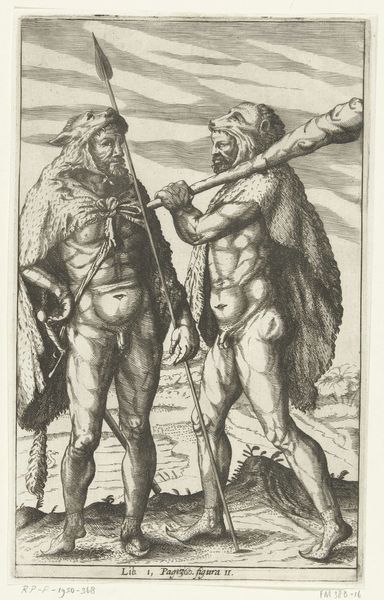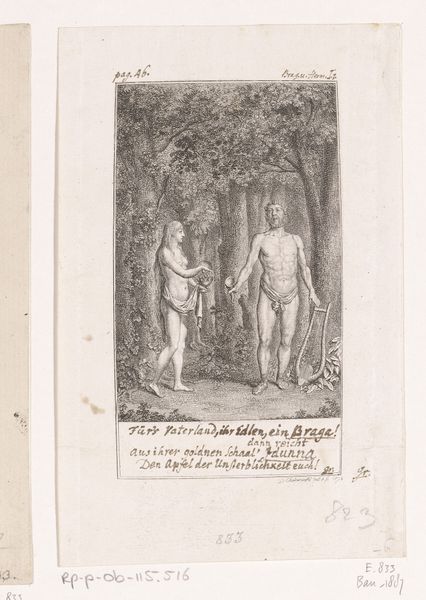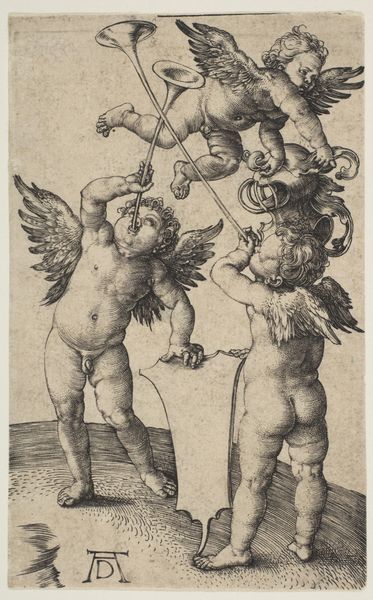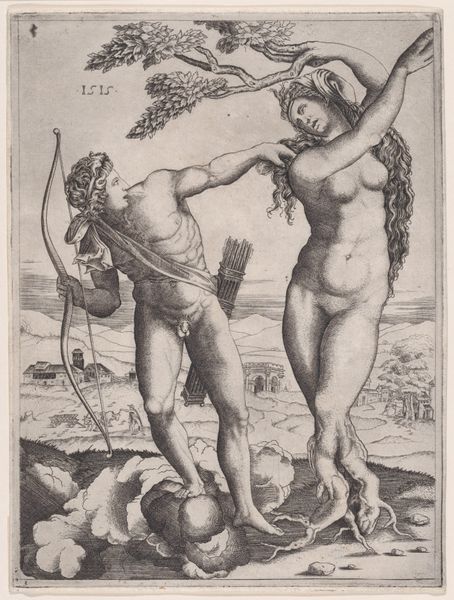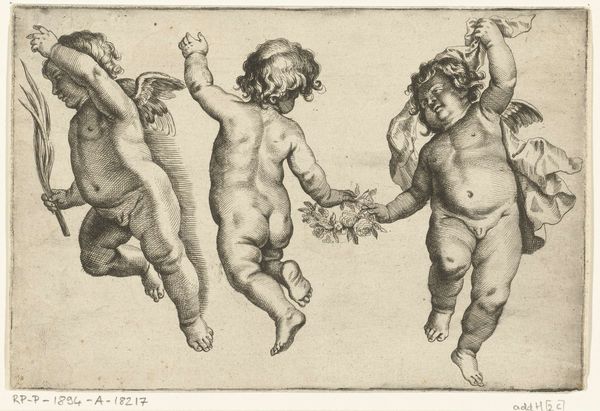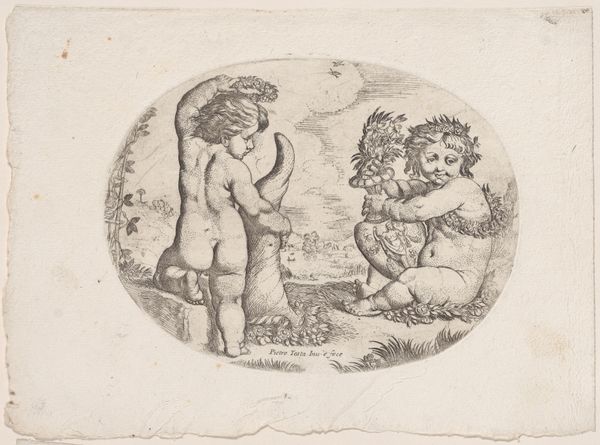
print, engraving
#
aged paper
# print
#
sketch book
#
traditional media
#
figuration
#
11_renaissance
#
personal sketchbook
#
journal
#
old-timey
#
sketchbook drawing
#
storyboard and sketchbook work
#
northern-renaissance
#
academic-art
#
sketchbook art
#
word imagery
#
engraving
Dimensions: height 229 mm, width 165 mm
Copyright: Rijks Museum: Open Domain
Curator: Here we have Hendrick Goltzius’s “Kind met twee hoofden,” from 1579. It's an engraving, so a print, on aged paper. Editor: It’s a pretty striking image, the figure’s…condition is quite confronting. I’m curious, what do you see in this piece beyond the initial shock? Curator: Immediately, I'm drawn to the material reality of this object. This isn't simply an image, it’s an *engraving*. Consider the labor, the skill, the very *process* required to translate observation into this precise, repeatable form. How does that context shift your perception? Editor: I suppose knowing it’s an engraving emphasizes the labor and skill, almost a scientific recording rather than an artistic interpretation, which gives it a different weight. The lines are so clean. Curator: Exactly! And let’s consider *why* someone would undertake such a laborious process. Engravings were often produced for wider circulation. This image, coupled with the text, suggests a desire to disseminate knowledge or perhaps a moral message. It's mass production, in a sense, tied to very particular materials and skill sets. How does understanding the intended audience – the potential consumers of this print – affect how we see the figure depicted? Editor: Knowing that makes me wonder about the societal context. Was it meant to be informative, a curiosity, or even… a cautionary tale? Did this image reinforce particular ideas, beliefs, or assumptions about childbirth? Curator: Precisely. Goltzius wasn't simply creating art; he was participating in the circulation of knowledge, social anxieties, and potentially, solidifying societal power structures. Even the paper itself has a history of material production! So this single print, at the end of the day, tells us many, many tales of human interaction with material, production and consumption. Editor: This has really broadened my view; I was just looking at it as an image, and now I see the physical and social processes that shaped it. Curator: Exactly! Thinking through materials helps unlock narratives within art objects.
Comments
No comments
Be the first to comment and join the conversation on the ultimate creative platform.

